
Tips, Tricks, and Doodads: Watch Out for Exposition! It's a Plot Killer!
I can't tell you how much I hate exposition. I know hate is a strong word. But it kills my plot. There I am plotting along. Happy as can be. I love plot. Plotting along is my favorite thing to do. Then here comes "necessary info." And in order to do my favorite thing I must engage with the thing I dislike the most.
The type of exposition I'm referring to is most commonly known as the "info dump." It's necessary information--often backstory--about characters that ultimately keeps the plot moving forward. So if you're reading about someone traveling to Tahlequah, Oklahoma for the Cherokee National Holiday, where they are about to reconnect with a long lost Cherokee sibling, you're going to need to know what first set them on this trajectory. The why and how is the plot. But nobody likes the what. It's all about the how. Everybody loves the how. How do I know this? Because how is the reason why I hate the what.
All kidding aside, I tend to minimize this type of exposition. Sometimes it involves introducing the characters in the novel. Readers must know all the major players. I tend to want to put this at the beginning of the novel so it doesn't disrupt my plot at critical moments later in the story line. I feel like it's early in the novel where readers have the most patience for this type of information. The "who's present" and why and how they effect the main character. It's like the main character is the sun, and the supporting cast are the planets in a solar system. Sometimes explaining gravitational pull is like pulling teeth. I know I'm mixing metaphors here but that's what exposition does to me. It makes me crazy.
Where was I? Oh yeah, I try to get away with as little exposition as possible. On a first draft, I info dump. I get it all out there. Then I start to whittle it away as I move through the revision phase. What's the smallest amount of exposition I can use without losing the "necessary info?" I want to start the reader in the middle of the action, and once I have the plot moving forward I don't want them to pause. Exposition makes them pause. So by reducing the amount of back story I can usually hide it with voice, using my personal colloquial method of capturing story on the page. If there's too much exposition, it's hard to hide it from the reader.
There are a number of other suggestions out there about handling exposition, like a character asking questions or spreading it out in small pieces, which are great and I use those from time to time as well. Mostly, I do what I mentioned above. I cut it down in size and flavor it with my writing voice. Typically, it works great but it can take many pass-throughs or revisions in order for it to feel like I've gotten it right. I'm a bit meticulous when it comes to this. Since it's such a hard disruption of plot, my perfectionism kicks in for the purpose of smoothing out the hard edges of exposition. I want to read through it as easily as I read through the rest of the novel.
If you have any suggestions, or methods that work best for your writing, I'd love to hear about it. How do you get through the "necessary info dump?"
Vernacular, Agency, & Intersectionality of Language Transformation
Growing up in households where words and phrases in both Kiowa and Cherokee were spoken and mixed with English, it gave me a unique understanding of language. As my family spoke, someone could be both skaw-stee and mon'sape. Skaw-stee is a Cherokee word that means "stuck up," and mon'sape is a Kiowa word that means "trouble maker." Mix these words with other phrases and Indigenized English words like gaa which is the Native version of "golly," and all of a sudden language becomes a playground of agency. Where this Kiowa/Cherokee/Mexican boy had a canvas of words to create a beautiful new symmetry.
When I arrived at the University of Oklahoma for the Master's program in English, I had already written one of my earliest pieces where Kiowa and Cherokee communities intersected. I became even more fascinated by colloquial vernacular and the waves it could create in literature. It made sense to me. Of course community members had the freedom to use language in a way that made sense to them. Each community, whether tribal or not, had its own terms and sayings and accents and ways of engaging, and every community had the freedom to make of language what it wanted.
While I was learning to be a grammarian, I also learned how to break those rules exquisitely on the page. For me, it was an act of rebellion. I was going to exercise my agency and use language the way it was used in the households where I grew up and had access to. As a child, I could be at a traditional Gourd Dance and hear Kiowa and Comanche and then later in the same summer be at traditional Stomp Dances and hear Cherokee or Creek. Then there were times when I'd be with my cousins in Aldama, Chihuahua, Mexico and hear streams of Spanish. I shifted between these cultures fluidly, and all these languages were normalized as they landed on my ear. I didn't think it odd or unique. This was my life and it was just the way things were.
Fast forward a few decades and I'm in a classroom at the Institute of American Indian Arts in Santa Fe, New Mexico. I'm buying into the doctrine of "literary fiction," where we bear witness to our experiences, where we bleed on the page, where we tell on ourselves before we tell on anyone else. And as I'm writing as catharsis, seeking to heal deep traumas from childhood, I'm also aiming to capture my communities and my families the way I had truly experienced them. Not some generic version of Native identity that makes white people feel safe enough to consider us "model minorities," in some type of sad display of pitiful. But Natives who were sometimes mean and vicious and were amazingly cruel heroes. Blur the lines between hero and villain--make characters so human that readers think they're real.
And in all that, I had to be honest about the intersectionality of language and how language itself is "real" and "living." I knew I wasn't only going to capture character with genuine authenticity, but I needed language to lay on the page the way it lays on the lips of children--with direct honesty. This is what I heard. This is what I said. This is the way we were--and still remain. So when you engage my debut novel be prepared for language and rhythm to disrupt your senses. You think you know Native peoples, but you only know a Native people, and are about to learn what it means to be Indigenous in a Neo-modern intertribal world, where Turtle Island is the only map to show you the way.
Humanitarian Effort for the Rich: Hollywood's Humanizing Project
When I watch movies, I tend to watch independents. Sometimes I'll watch the Hollywood independents, if it looks like they're only going to modestly apply structuralism. I like to think I'm savvy. I don't want to feel like I'm a monkey watching for bananas, which Hollywood has turned into a science. If you don't know how structuralism has put your brain on repeat for the last five decades, hit me up on the comments below and I'll explain. This post is for Hollywood's newest charity: Save the Rich!I've noticed this trend for quite some time. Hollywood likes to showcase the uber-wealthy as their protagonists.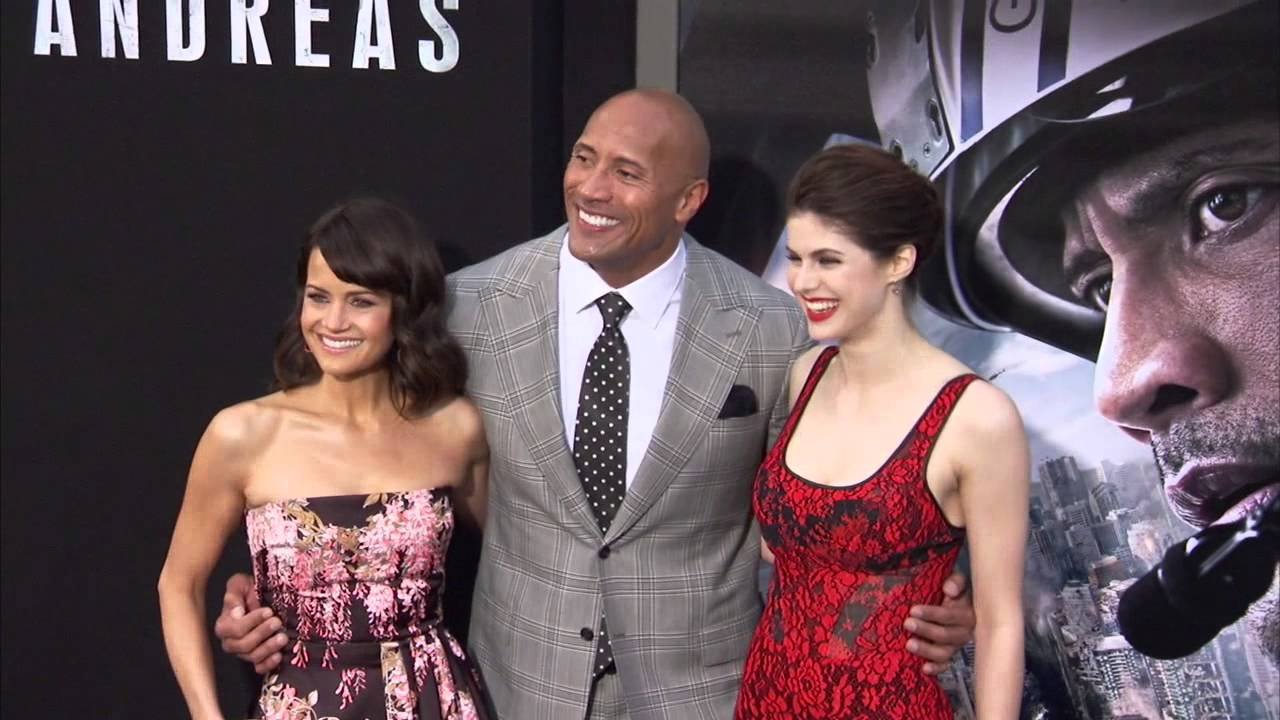 So my sons came back from Wal-Mart with the movie San Andreas. It stars Dewayne Johnson, otherwise known as The Roc. I'm not prone to watching these big Hollywood productions, but my sons were excited to watch the movie and it was entertaining enough. I watched to the end. I thought I was going to predict a few things and it was nice to find out I was wrong. I'm so overly focused on structuralism that sometimes I miss the connections.Then there was the hyper masculine motif that could not be balanced by vain attempts to masculinize one female character. Ultimately, it was a damsel in distress production. Nothing new there.
So my sons came back from Wal-Mart with the movie San Andreas. It stars Dewayne Johnson, otherwise known as The Roc. I'm not prone to watching these big Hollywood productions, but my sons were excited to watch the movie and it was entertaining enough. I watched to the end. I thought I was going to predict a few things and it was nice to find out I was wrong. I'm so overly focused on structuralism that sometimes I miss the connections.Then there was the hyper masculine motif that could not be balanced by vain attempts to masculinize one female character. Ultimately, it was a damsel in distress production. Nothing new there.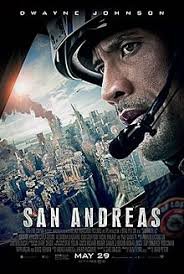 What stood out to me most was all the poor people running around the collapsing cities, and for some reason none of those impoverished people could lead in this storyline. They had to make the main characters uber-wealthy, with jet setting and mansion living. They dined in high rise buildings and took first class airplane trips to volleyball games. These were seven figure folks. And as they ran past all those poor people in the cities (the ones who got crushed by buildings and water), I kept trying my hardest to empathize for these uppity rich people as they tried to escape with their lives. Because somehow their lives were so much more important than the lives of the average people who were trying to escape the same natural disaster. So much more important than our lives that the cameras were trained on them.So Hollywood wants you to feel sorry for the rich. Why would they be humanizing a small group of people who exploits everyone else on the planet? I'm sorry. I'm not trying to be callous. But why do the rich get this privileged treatment, while impoverished people are constantly demonized and dehumanized by news and popular media.Lucky, for my sons, they have a father who can teach them how to see through the veil. Is it just me? Or have you also noticed all the hyper wealthy characters on these movies? It seems like every movie has some type of rich person as the lead or emotionally connected to the lead person. It is so blatant it makes me wonder why Hollywood is working so hard to humanize this select group of people.
What stood out to me most was all the poor people running around the collapsing cities, and for some reason none of those impoverished people could lead in this storyline. They had to make the main characters uber-wealthy, with jet setting and mansion living. They dined in high rise buildings and took first class airplane trips to volleyball games. These were seven figure folks. And as they ran past all those poor people in the cities (the ones who got crushed by buildings and water), I kept trying my hardest to empathize for these uppity rich people as they tried to escape with their lives. Because somehow their lives were so much more important than the lives of the average people who were trying to escape the same natural disaster. So much more important than our lives that the cameras were trained on them.So Hollywood wants you to feel sorry for the rich. Why would they be humanizing a small group of people who exploits everyone else on the planet? I'm sorry. I'm not trying to be callous. But why do the rich get this privileged treatment, while impoverished people are constantly demonized and dehumanized by news and popular media.Lucky, for my sons, they have a father who can teach them how to see through the veil. Is it just me? Or have you also noticed all the hyper wealthy characters on these movies? It seems like every movie has some type of rich person as the lead or emotionally connected to the lead person. It is so blatant it makes me wonder why Hollywood is working so hard to humanize this select group of people.
Support a Native owned Etsy shop, Allies United, where I offer unique merch for allies of social justice movements, like MMIW, Native Lives Matter and Black Lives Matter. Take a look inside my Etsy shop here: etsy.com/shop/AlliesUnited.
Proximity's Unfortunate Consequence for Peripherals to the Writer's Gaze
There you are enjoying the advantages of not being accountable and then a writer moves in next door. At first you think, "Oh, this will be interesting...to have an artist type in the community," and then you realize writers write. More importantly, writers stand up for the weak, abused, and disadvantaged.Suddenly, you start to hear how divisive your words are, and you pause. You start a sentence and pause. Why? Because the writer just overheard you.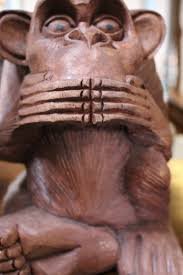 It's true. Friends of writers understand this aspect intimately, and have long accepted "Whatever they say will be held against them." But typically there are no deal breakers in their personality. By virtue of being around writers all the time they've come to exist in the world in a genuine and compassionate way. They know writers are intelligent and understand context and begin to trust us to not recount a situation outside of the space it was experienced.I write from personal experience. I write fiction. Not memoir or non-fiction. But what I've found is that to make fiction unique and your own, writing from personal experience is the best way to capture powerful and memorable moments.
It's true. Friends of writers understand this aspect intimately, and have long accepted "Whatever they say will be held against them." But typically there are no deal breakers in their personality. By virtue of being around writers all the time they've come to exist in the world in a genuine and compassionate way. They know writers are intelligent and understand context and begin to trust us to not recount a situation outside of the space it was experienced.I write from personal experience. I write fiction. Not memoir or non-fiction. But what I've found is that to make fiction unique and your own, writing from personal experience is the best way to capture powerful and memorable moments.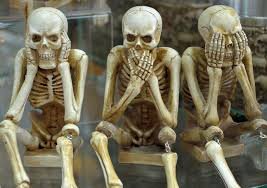 My first novel, which is in the revision phase right now, is about 90% true. In fact, it's so true all I had to do was change names and alter a few personalities. Scenes are arranged to maintain a story arch and to create dramatic action, but every scene is based on truth, based on a real experience. Sometimes you live through a series of events and, as a writer, you can't believe your unfortunate and fortunate luck. It is so terrible and magnificent, simultaneously, that you say to yourself, "This is playing out like a novel." Then a year after you've left the situation, you have distance enough to write about it. That's what happened to me. It was a hard situation to live through, but worth every word on the page.So if you find yourself in proximity to a writer, don't be surprised if you end up fictionalized among the pages. And if you don't want to be a villain in fiction, then don't be one in real life.
My first novel, which is in the revision phase right now, is about 90% true. In fact, it's so true all I had to do was change names and alter a few personalities. Scenes are arranged to maintain a story arch and to create dramatic action, but every scene is based on truth, based on a real experience. Sometimes you live through a series of events and, as a writer, you can't believe your unfortunate and fortunate luck. It is so terrible and magnificent, simultaneously, that you say to yourself, "This is playing out like a novel." Then a year after you've left the situation, you have distance enough to write about it. That's what happened to me. It was a hard situation to live through, but worth every word on the page.So if you find yourself in proximity to a writer, don't be surprised if you end up fictionalized among the pages. And if you don't want to be a villain in fiction, then don't be one in real life.
Support a Native owned Etsy shop, Allies United, where I offer unique merch for allies of social justice movements, like MMIW, Native Lives Matter and Black Lives Matter. Take a look inside my Etsy shop here: etsy.com/shop/AlliesUnited.
(Works Cited: Images were borrowed from PxHere and Pixabay)
Drama Triangle: Enhancing Victimhood with Vengeance and Sacrifice
I don't denounce structuralism. Every time I watch a Disney or Pixar movie with my daughters and tears start welling up in my eyes by simple structural tactics, like music and camera angles, I'm reminded there is a reason it works. But I'm a literary writer and we are defiant bastards and we like to take structuralism and bend it our will. So we can look in the mirror and say to ourselves, "The industry will not make me a slave."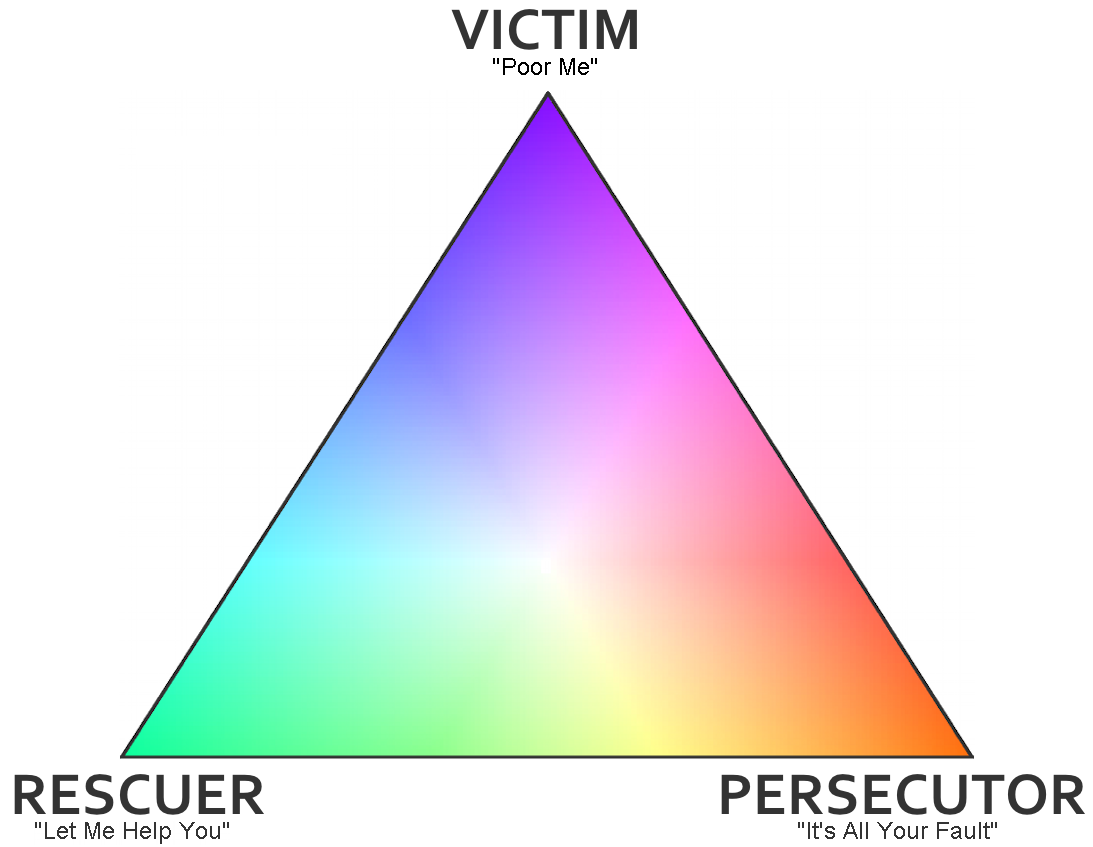 The above diagram is one of the tools I use to write fiction. I learned this from an adjunct professor at the Institute of American Indian Arts, where I obtained my BFA in Creative Writing. It has helped tremendously. I use it over and over and weigh each character against it.So to create a dynamic character in your story, you have to apply all three to your main characters, including the antagonist. This will have your character looking three dimensional, like a real human being. Easy enough.But I'm a nerd and a writerly nerd at that so I think about writing often and techniques and how they're applicable to what I'm working on. Right now, I'm revising my first novel so I spend a lot of time thinking about the above diagram.Mostly, of recent, I've been thinking of the victim dimension, and it, like the other two, can appear to be straight forward. Then I start to ask: What kind of victim? How many victim types can there be? Then I start to make an interesting list. There is the wallow in self pity victim. There is the weaponize my victimhood victim. There is the vengeful victim. And then there is the savior victim.What I've come to find is a character is more dynamic and interesting and resonates when the character can exhibit as many traits of the victim as possible. Why? For the same reason you want your main character to have all three dimensions in the diagram above, because it makes them appear more complex, more real, more human.What is more interesting to me is that when you mix victim with the rescuer you get the savior victim (those who have been violated and have returned to rescue you from your own brutality), and when you mix victim with the persecutor you get the vengeful victim (those who have been violated and have returned to make you pay). The main character in my novel, Dean, plays victim/rescuer to certain individuals in the novel, but toward the antagonist he plays victim/persecutor.But what makes me most excited about my novel is when Dean exacts vengeance on the antagonist he is doing it in the name of all the victims the antagonist has metaphorically killed in the novel, so subsequently he blends rescuer and persecutor. More or less, he throws himself on a grenade.What are your thoughts? How might you blend the three different roles listed above? Have you applied the drama triangle to your writing? What was the outcome?(Works Cited: The above image was borrowed from Wikimedia commons.)
The above diagram is one of the tools I use to write fiction. I learned this from an adjunct professor at the Institute of American Indian Arts, where I obtained my BFA in Creative Writing. It has helped tremendously. I use it over and over and weigh each character against it.So to create a dynamic character in your story, you have to apply all three to your main characters, including the antagonist. This will have your character looking three dimensional, like a real human being. Easy enough.But I'm a nerd and a writerly nerd at that so I think about writing often and techniques and how they're applicable to what I'm working on. Right now, I'm revising my first novel so I spend a lot of time thinking about the above diagram.Mostly, of recent, I've been thinking of the victim dimension, and it, like the other two, can appear to be straight forward. Then I start to ask: What kind of victim? How many victim types can there be? Then I start to make an interesting list. There is the wallow in self pity victim. There is the weaponize my victimhood victim. There is the vengeful victim. And then there is the savior victim.What I've come to find is a character is more dynamic and interesting and resonates when the character can exhibit as many traits of the victim as possible. Why? For the same reason you want your main character to have all three dimensions in the diagram above, because it makes them appear more complex, more real, more human.What is more interesting to me is that when you mix victim with the rescuer you get the savior victim (those who have been violated and have returned to rescue you from your own brutality), and when you mix victim with the persecutor you get the vengeful victim (those who have been violated and have returned to make you pay). The main character in my novel, Dean, plays victim/rescuer to certain individuals in the novel, but toward the antagonist he plays victim/persecutor.But what makes me most excited about my novel is when Dean exacts vengeance on the antagonist he is doing it in the name of all the victims the antagonist has metaphorically killed in the novel, so subsequently he blends rescuer and persecutor. More or less, he throws himself on a grenade.What are your thoughts? How might you blend the three different roles listed above? Have you applied the drama triangle to your writing? What was the outcome?(Works Cited: The above image was borrowed from Wikimedia commons.)
Mojo in the Groove: The Ebb and Flow of Creative Writing
The most dangerous thing you're going to do is drive. Because of the frequency in which we drive and the comfort we get from believing we've mastered techniques to maintain proper focus, we get into that "conscious incompetence" space where we increase our likelihood of being in an accident. Similarly, I seem to find myself doing the same with my writing, driving on automatic. I'm cruising along and I'm not paying attention to my surroundings.
![AAGG0377[1]](http://static1.squarespace.com/static/643874327cc59128758e81fe/643f1653aaff1a0b48a209bb/643f1654aaff1a0b48a20a3d/1681856084227/aagg03771.jpeg?format=original)
The most frustrating aspect of writing for me right now is maintaining consistent focus. Yeah I get up and turn on the computer and I stare at the screen and I move one word here and one word there, but what am I really doing? I'm on automatic.
Aaaaaaaaaaaaaaaaaaaaaaaaahhhhhhhhhhhhhhhhhhhhhhhhhhhhh!!!!!!!!!!!!!!!!!!
I need to wake up. I wrote the majority of my master's thesis inside a week. But I had such an intense focus and completed months of research before that week. I was prepared because I was paying attention.
I'm sitting on my first novel. 15 chapters completed. I'm editing. Revising. Doing the sweeps I do at this stage as I go through and pull out the voice and insert details that will bring the story to life, breathing spirit into the pages.
This is the most exciting part of writing. I like all the stages, but I like the final revision stage the best. It's great to see how characters come alive with metaphors and description that you didn't know you had in you. I like the struggle and the element of surprise when I finally capture something in a unique and powerful way. It's like dropping the game winning shot.
So why am I coasting? What happened to my drive? Maybe I hit a wall and I need to see myself through it. Maybe I'm waiting for my second wind. Maybe I better figure all this out before something happens and I miss the opportunity I've been working so hard to obtain.
Support a Native owned Etsy shop, Allies United, where I offer unique merch for allies of social justice movements, like MMIW, Native Lives Matter and Black Lives Matter. Take a look inside my Etsy shop here: etsy.com/shop/AlliesUnited.


